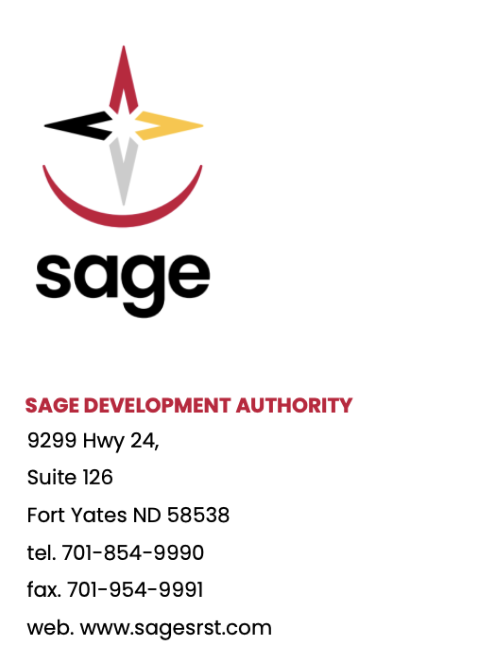SAGE Begins Extensive Environmental Studies for Anpetu Wi Wind Farm

SAGE is assessing the potential environmental impacts associated with developing the Anpetu Wi wind project. As recommended in the U.S. Fish and Wildlife Service’s (USFWS’s) Land-Based Wind Energy Guidelines (WEG), SAGE is using a “tiered approach” to identify, avoid, and minimize effects of the proposed project on the environment and species of concern. SAGE is also working with the North Dakota Game and Fish Department in identifying Species of Conservation Priority within the project area and the Standing Rock Sioux Tribe Tribal Historic Preservation Office to identify cultural resources in the project area.
During the preconstruction phase of the project, SAGE will conduct preliminary environmental site evaluation and site characterization studies (called Tiers 1 and 2 in the WEG), which include a review of publicly available environmental data and literature to conduct a landscape-scale screening and broad characterization of the environment of the project area.
Field studies to document site wildlife and habitat and predict project impacts are underway as part of the environmental study (Tier 3 of the WEG). These studies include avian use surveys, raptor nest surveys, sharp-tailed grouse lek surveys, long-term passive acoustic bat monitoring, aquatic resources surveys, and archeological and cultural resources surveys. Future studies include, but are not limited to, preparation of a bird and bat conservation strategy, a whooping crane assessment, and a grassland assessment.
The avian use surveys began in January 2022 and will continue over a 12-24 month period (depending on the results of year 1 studies) to document the bird species in the project area. The associated data will be used to quantify the temporal and spatial large and small bird use in the project area and to document use of the proposed project area by threatened, endangered, and other sensitive bird species.
Aerial and ground-based raptor nest surveys were conducted to identify locations and status of eagle and raptor nests within the project area. These surveys include multiple ground-based eagle nest checks that occurred in January, April, and June 2022 and two aerial transect small plane flights that took place in March and May 2022. One additional ground-based eagle nest check will occur in August 2022.
Sharp-tailed grouse surveys were conducted in conjunction with aerial raptor nest surveys in April 2022 via an aerial transect plane flight that determined whether active grouse leks are present within the project area. Leks are the open grounds, also called dancing grounds, in which male grouse display to attract mates.
SAGE is also studying the bats in the project area through the use of acoustic bat detectors throughout the area, which were deployed in April 2022 and will continue to record data through November 2022. These bat detectors record the sounds of bats in the project area. The recorded data is then analyzed and will be used to measure relative bat activity and to assess the risk of collision mortality caused by the project. The bat detectors are being relocated periodically to maximize coverage of different bat habitat types during the survey period.
A desktop analysis and aquatic resources field survey began in July 2022 to identify aquatic resources, such as wetlands, streams, creeks, and rivers, within the project area that could potentially qualify as water of the U.S. under Section 404 of the Clean Water Act and require permitting by the U.S. Army Corps of Engineers. The surveys will continue through August 2022. Desktop analysis data and on-site observations are being used for planning and preliminary design.
SAGE, in collaboration with the Standing Rock Sioux Tribe Tribal Historic Preservation Office, is also conducting cultural resource surveys to document the archaeological resources associated with the project area. A desktop file search of previous cultural resource inventories and previously recorded sites within the project area has been conducted. Pedestrian field surveys began in July 2022 and will continue through August 2022 to identify, document, and evaluate cultural and tribally important resources within the project area. The data will be used for planning and preliminary design purposes.
You Might Also Like
On Tuesday, August 11, 2020, SAGE Development Authority General Manager Joseph McNeil Jr. participated in a live interview via Zoom with Helene D. Gayle CEO of The Chicago Community Trust, one of the nation’s leading community foundations. The Trust works with donors, nonprofits, community leaders and residents to lead and inspire philanthropic efforts that improve […]
SAGE general manager Joseph McNeil Jr. joined KX News “Town Hall” meeting this past Thursday, August 20, for a conversation on Race in the Dakotas. Retired Bismarck police chief Dan Donlin, community advocate Ernest Usher, and North Dakota Legislative Representative Ruth Buffalo were also participants. The meeting was a candid discussion on protests, stereotypes, and […]


